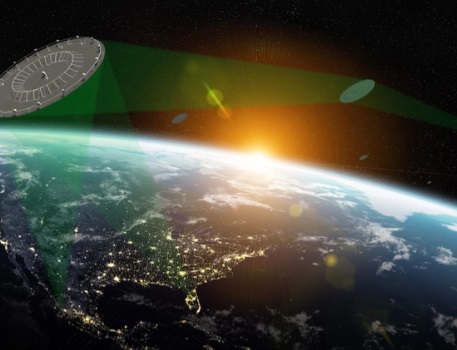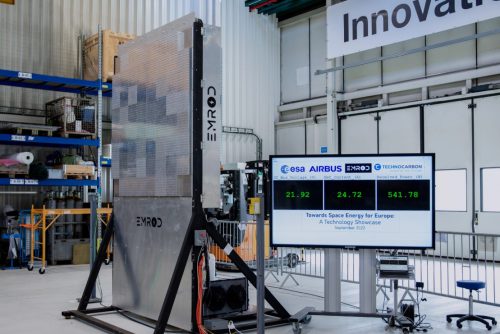
The Worldwide Energy Matrix (WEM) is the first ever global energy grid. It is a cutting-edge wireless power transmission system designed to connect renewable energy generators with consumers all over the world.
The WEM concept can be likened to what is currently used for communication purposes; a constellation of orbiting satellites transferring information from one location on Earth to another, except with WEM, energy is transferred instead of information in the form of an electromagnetic beam.
EMROD’s power-beaming system unlocks the ability to deploy energy infrastructure in space, moving world-wide energy distribution into orbit.
This system will have a transformative impact on the energy sector, supporting the development of a more flexible and resilient grid and is the key to solving many of the challenges currently facing the sustainable energy transition.
Enables electrification and decarbonization
WEM provides an efficient means of transporting electricity to remote locations around the world. This, in turn, makes electrification more justifiable as it allows for the replacement of fossil fuel-based technologies with cleaner, electricity-based alternatives.
Overcomes renewables’ main issue: variability
The variability of renewable energy sources over various timescales means that grids cannot depend on them completely. It means that there needs to be significantly more generation infrastructure than is necessary or, more realistically, that non-renewable energy sources will retain an important role in generating power to pick up the slack when renewables are not at full capacity.
Bypasses “troubled” zones
A major difficulty with transmitting energy is that land-based infrastructure must navigate various troubled zones where there is conflict or where there are other security concerns. This heightens costs, either to protect or repair the infrastructure. Additionally, this often creates dependence on various stakeholders (e.g., local security forces) who guarantee the safety of the transmission infrastructure.
Enables off-grid power
It provides a way for off-grid sites to connect to grids, replacing diesel generators and large batteries. WEM is also relevant in situations where natural disasters have destroyed infrastructure, causing grids to stop functioning and leaving affected areas essentially “off-grid.” In these scenarios, WEM can provide a reliable and sustainable source of power to support recovery efforts.
Allows for optimal placement of renewables
Connecting multiple grids around the world ultimately creates a global grid, which would allow renewable energy generators to be placed in their optimal locations.
